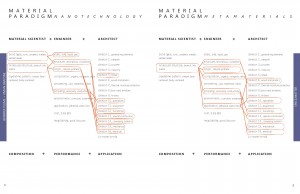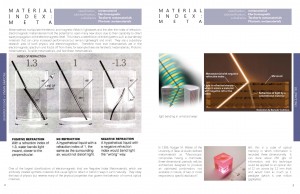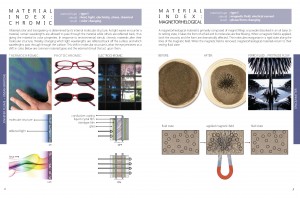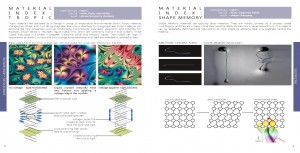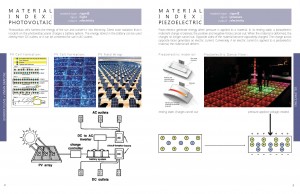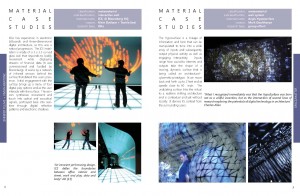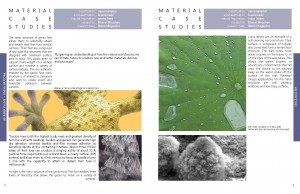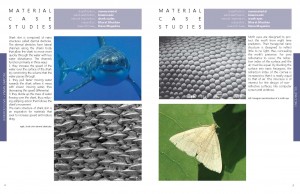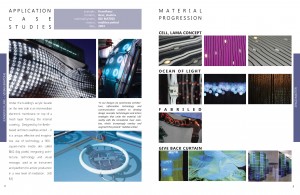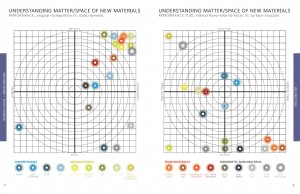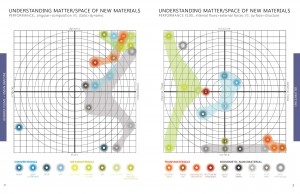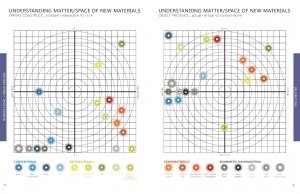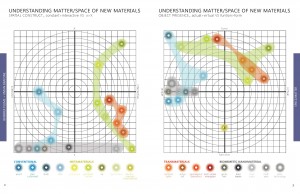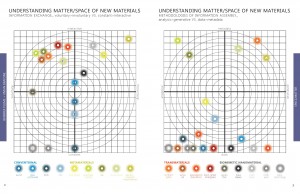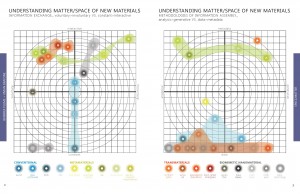Matter/Space
Skin Interface
Running from the internet/government/worldwide countries
http://www.nytimes.com/2010/10/24/world/24assange.html?_r=1&hp
This article is about the man behind the Iraqi war wikileaks, and how the internet and globalization as an operational platform has made disappearing and hiding a difficult task.
Pre-Midterm Bratone+Plume
PreMidterm_Presentation Spreads : download the presentation slides here.
We first examined existing material paradigms of the fields most closely associated with material studies.
Material scientists have a bottom up approach to materials; they examine material composition and allow that to determine material properties. Engineers approach materials from the top down; they determine performative requirements and select materials based on how well they fit these requirements. Architects categorize materials based on predefined categories of material systems and applications. This type of classification biases traditional materials and does not lend itself to new materials that do not easily fit into predefined categories. Using three categories of new materials (nanomaterials, transmaterials, and metamaterials) we tried to map intersections between these categorizations and project a future classification that could be applicable across disciplines.
We compiled an index of some of the overarching categories of materials that exist within our fields of interest:
We also looked into specific projects that apply these emerging material technologies:
The following graphs attempt to map these materials against common parameters and against each other:
Nanofactories Explained
K. Eric Drexler is considered a founding figure for modern ideas about manufacturing nanomaterials. Though the idea of a nanofactory has been a subject of his writing since the 1980’s, his book “Nanosystems: Molecular Machinery, Manufacturing, and Computation” sets forth some good basic definitions of what molecular manufacturing is. As published:
Molecular manufacturing: the construction of objects to complex, atomic specifications using sequences of chemical reactions directed by non-biological molecular machinery.
Molecular Nanotechnology: comprises molecular manufacturing together with its techniques, its products, and their design and analysis; it describes the field as a whole.
Mechanasynthesis- mechanically guided synthesis- is fundamental to molecular manufacturing; it guides chemical reactions on an atomic scale.
Drexler’s blog (linked through the image above) catalogs and comments on developments in nano world.
Linked below is a video (which despite the graphic quality is described by Drexler as being relatively accurate as far as the basics of nano manufacturing is concerned).
Application: NanoBiomimetics
NanoBiomimetics looks to nature for inspiration for nanomaterial structures that have many beneficial qualities.
– Self-cleaning materials: The study of the nano surface structure of lotus leafs and water-striders (insects) has generated interest in materials that reduce contaminant build-up just in the way they are structured.
– Stickiness: gecko and spider feet are structured for reversible dry adhesion (vs. reversible wet adhesion, as seen in fly feet, or permanent wet adhesion, as seen in everyday tapes and glues). The structure of gecko feet is such that surface area is maximized to allow adhesion to many surface types.
Drag minimization: The lateral structure of shark skin (dermal denticles) reduces drag on the shark, allowing it to move more quickly and with less water disturbance. This nano-structure is the the inspiration for the fabric and design of the Speedo LZR racer swim suits (to which many of the record-breaking times were attributed during the 2008 Olympics).
Anti-reflectivity: The hexagonal structure of the moth eye has led to an interest in nano-faceted surfaces that would have similar anti-reflectivity effects. This structure is of particular interest for the manufacturers of computer screens.
In all cases, these dramatic effects are created with hierarchical structuring at all levels. Nature adapts form and structure to function while optimizing material usage.
Click the image for the full article.
Application: Nanomedicine
Highlights:
nanobiotechnology- science and technology of the modulation of cell function on the engulfment of a nano-sized entity by the cell.
nanomedicine- field of science based on cellular uptake of targetable nano-sized materials that can be used in drug delivery, imaging and diagnostic purposes, biomarkers, and ex-vivo and in-vivo sensors.
Nanomedicine deals with nanomaterials between 10-100 nm in diameter.
Nanomedicine has the potential to reduce drug dosage by a couple thousand times that of a normal drug therapy dosage.
Click the image to link to the full article.

